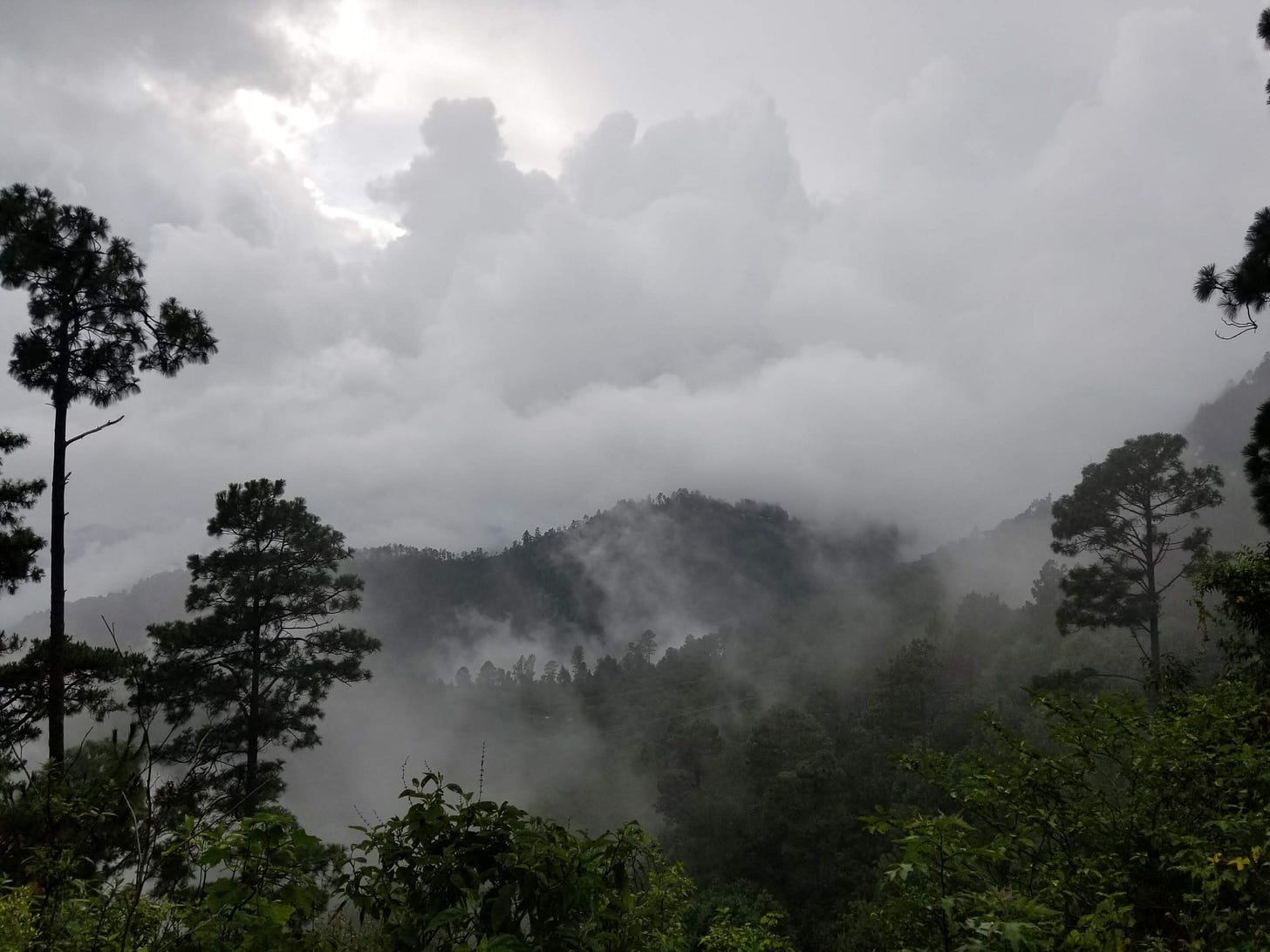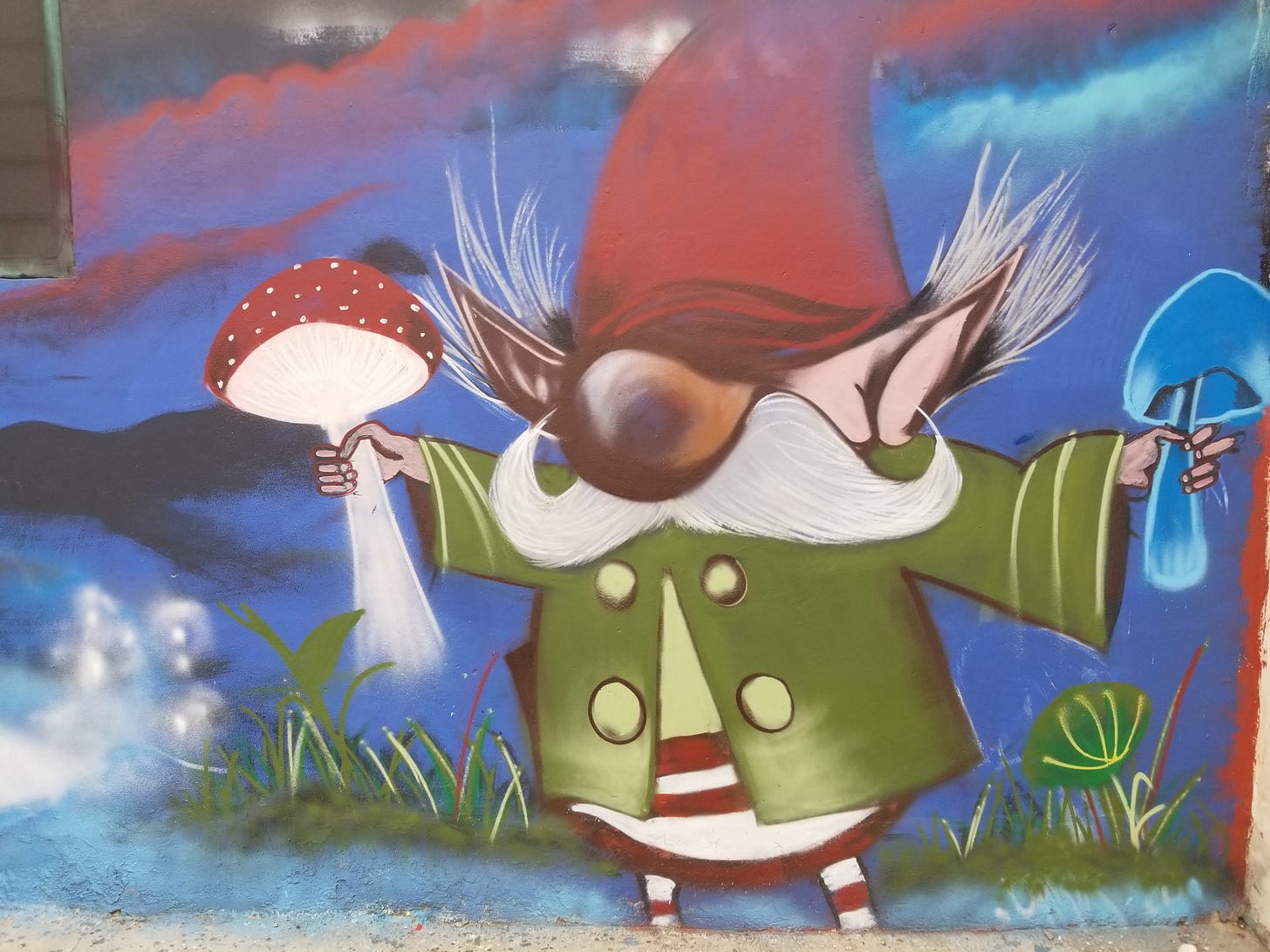Mexican Forest Spirits: The Chaneque, Duende and Alux
Did You See Something or are You “Tripping”?
The extent to which Americans know Mexico, doesn’t extend much further than getting sunburned, while sipping a lime-crowned, salty Corona on the beach in Cancún. However, for the foreigners who speak Spanish, and plunge deep into Mexico’s mysteries, one finds a country as rich in physical beauty as it is in folklore, legends and myths. Loving Mexico means enjoying its enchanting landscapes, so be sure you know what a chaneque, a duende, and an alux is, because you may see beyond the bookends of consciousness.
Weird Mythology Abounds in Mexico
For those willing to look beyond the surface, Mexico boasts a rich heritage of weirdness. Day of the Dead celebrates death, human sacrifice was practiced here, human skulls were used to create art and architecture, the Spanish Inquisition reached Mexico, and plant medicines have swirled around the country for millennia. Lay all of this on a bedrock of indigenous belief systems, and folklore based on nature worship or animism, springs to life in the form of forest spirits.
You don’t have to spend much time with locals outside of tourist areas to hear about the chaneques, duendes, or aluxes. These 3 forest entities, spirits and/or creatures are found throughout much of Mexico. So the next time you’re on an adventure in Mexico’s forests, mountains, jungles, caves, swamps and lagoons, if you think you’ve seen a little person scurrying by, you might not be tripping after all,
Who are the Chaneques?
I first learned about the chaneques after I moved to Oaxaca. One of my local friends taught me about them. I already knew them, but by a different name- the duende (see below). The word chaneque derives from Nahuatl, the ancient Mesoamerican language used by the Aztecs, other indigenous tribes and their predecessors. In Nahuatl, chaneque means “those who inhabit dangerous places” or “owners of the house.”
The chaneques
are believed to be ancient spirits or forest-dwelling beings deeply rooted in the mythology of indigenous Mexican cultures, particularly the Aztecs and the Mayans.
They are…
…often depicted as mischievous, child-sized beings with distinct physical characteristics. Moreover, they are typically described as having long, unkempt hair that flows like the vines of the jungle. In addition, their skin is said to be a deep shade of green or brown, perfectly camouflaging them within the dense vegetation. Furthermore, their eyes, resembling sparkling emeralds, are believed to hold a world of secrets and mischief.
Their appearance may vary depending on who you ask. More often than not, the chaneques are pictured as diminutive, wrinkled, and elderly, forest protectors. They’re small children with an old person’s face. Comparisons are drawn to elfs, globlins, and sprites.
Chaneques seem to be ambivalent to humans. They can be playful or prankful, helping or hindering. They are the forest’s mischievous tricksters and are well-known for their shenanigans. The sylvan rascals tip people out of hammocks, scare humans and animals, mimic human speech, throw rocks, make noises, move objects/make things disappear, sometimes lead people astray, and test them.
If treated well with offerings like sweets, food, drink, and tobacco chaneques return the favor by protecting crops, keeping bad spirits away, and helping people lost in the woods. At worst, if you cross a chaneque, they might kidnap your child or steal your soul and bury it underground.
I found this intriguing report of a chaneque sighting, which includes a hand drawn picture that looks like a police suspect sketch. Here’s a creepy video of a chaneque sighting.
Chaneques wear typical indigenous attire, like loincloths and tunics, sometimes made out of various forest materials. They have unruly hair, large ears, and expressive eyes. They can shapeshift, and transform into plants and animals to avoid detection. They are also adept at illusions and deception to throw off travelers and can distort time. These guardians protect Mother Nature and ensure her delicate balance between flora and fauna.
The chaneque mythology has evolved over the centuries. Some traditions hold that chaneques are the children of Tlaloc. Tlaloc is perhaps the most powerful Mesoamerican deity and god next to Quetzacoatl, the feathered serpent. Tlaloc (or Chaac for the Maya) is the god of rain, thus he has great dominion over agriculture, especially corn.
Catholicism has also influenced chaneque folklore. After devising a shrewd plan, Catholics co-opted chaneque lore to drive local indigenous people to religion. In this version, chaneques take you to the underworld through the trunk of a ceiba tree. I know the ceiba tree well, and it’s a favorite Mexican tree of mine. The ceiba is sacred to the Maya, as the tree represents their 3 tiered cosmology.
Who are the Duendes?
Duende originates from Spanish and translates to “master of the house.” For the most part, duendes are the figurative siblings of chaneques. Duendes are small creatures likened to imps, gnomes, elves, and maybe trolls and dwarfs. Duendes don’t differ much, except for a touch of Anglo-Saxon flavor.
In my opinion, duendes share a close affinity to gnomes. Duendes are often depicted wearing red, pointy caps, maybe sitting on a mushroom in the forest. They are associated with children and animals, and believed to live in the walls of homes, sometimes in children’s bedroom walls. They also reside in the woods, and are mischievous and elusive like chaneques. Some people believe if an old man asks you for food or money, that he could be a duende. Christians consider duendes evil spirits and sinister beings.
Similar to the chaneques, if you provide offerings, treats and gifts to the duendes, they will return good fortune. If you’re dishonest with the duendes, you’re going to have some issues.
If you go to one of the countless esoteric stores across Mexico, you’ll almost always find a small statue of a gnome wearing a red, pointy hat. Since duende comes from Spanish, it could be that the Spanish and/or French brought over their own duende folklore. This would make sense. The word “gnome” is French, and gnomes are of French origin.
Who are the Aluxes?
Again, the aluxes are a close relative to the chaneques and duendes, with a Mayan spin. The aluxes live in the Yucatán and are sacred figures of Mayan folklore. They are a type of spirit or sprite that guards corn fields and cenotes. They also protect the jungle and have a similar temperament to chaneques and duendes.
One origin story of the aluxes says,
...that they were the first inhabitants of the earth and that they are as old as the sun. In many stories it is said that the Aluxes are descendants of the Dwarf of Uxmal; another fascinating history of Yucatan.
They have the appearance of an old man, but with the height of a 4-year-old child. They can be naughty or very calm, it all depends on how you treat them. They are guardians of crops, as well as animals.
The aluxes share much in common with chaneques and duendes:
The aluxes' capricious nature is said to reflect the unpredictability of the wilderness they safeguard. This belief serves as a reminder of the close and complex relationship between the Maya ancient and modern civilization and the ecosystems they coexisted and coexist with.
Maya aluxes are commonly thought of as mischievous but not necessarily malicious. They are known to interact with humans, either out of curiosity or, at times, to teach lessons or bestow blessings. Some tales depict them playing tricks on people, such as hiding belongings or leading travelers astray, while others tell of aluxes assisting farmers by tending to their crops overnight. One belief is that aluxes can appear as travelers in need of assistance, and then bestow blessings or troubles upon those they meet depending on whether they are offered help.”
The aluxes might also be considered the Yucatán’s construction site stewards. Aluxes grant their permission, blessing and good luck for construction projects. Since they are the guardians of the jungle, moving ahead and hurting the jungle, without their permission, could have detrimental repercussions. Thus, often construction projects build a small alux house to appease the jungle gnomes, so they don’t interfere with building efforts.
If not a small house, then the usual alux offering will do, and they range “...from simple gifts like food and trinkets to more elaborate ceremonies involving music, dance, and prayer.” In fact, I first learned about the aluxes 4 years ago in the Yucatán. I was introduced to la gruta de los aluxes, or the cave of the aluxes.
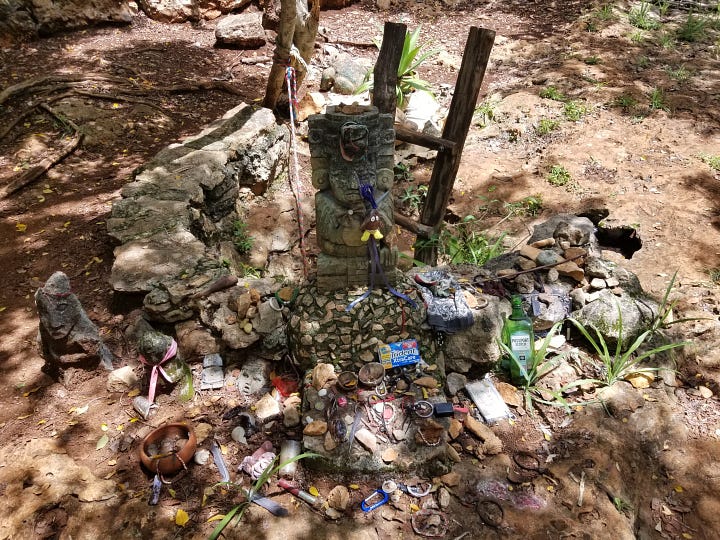

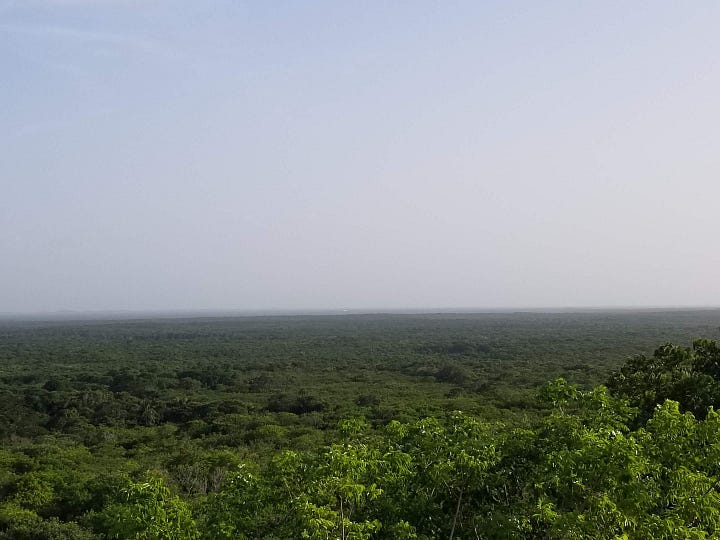
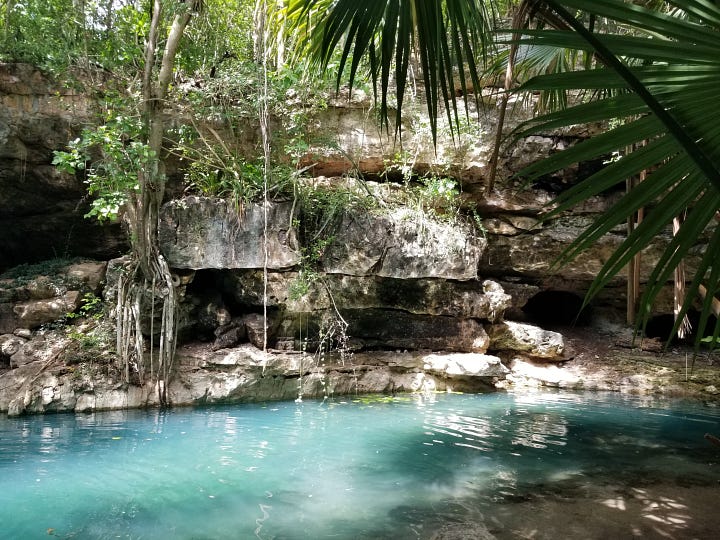
I went into that cave 2 or 3 times. The first time I got a guided tour, and saw all the ancient bones of unidentified origin, along with pottery shards, and human teeth. One time, I went into the cave by myself at night. Talk about overcoming fear. I guess I passed muster because I gave the aluxes an offering of balché, an ancient Mayan beverage.
I’ve also explored over 2 dozen caves and cenotes throughout the Yucatán. One cave I visited was the subject of a National Geographic television show about the Maya. That cave is weird. Alas, I didn’t see an alux!
The Fluidity of Mexican Mythology
Mexico’s mythology and folklore is quite fluid and ambiguous. Here in Oaxaca people speak of chaneques in the mountains. However, just a few hours south in San José del Pacifico, the town pays respects to the duende.
There are no hard and fast rules about where you’ll find each forest spirit. For sure, you won’t find aluxes outside of Maya territory. Sometimes someone won’t know what a duende is, because they know it by chaneque.
Regardless of regional and geographic differences, tons of overlap exists between the three. Whether they’re more related to an imp, sprite, gnome, troll, elf, dwarf, or even a leprechaun, is your decision. Without a doubt, the 3 Mexican forest spirits also intersect with global traditions.
Whether the kobolds of Germanic mythology, the gnomes of France, the Irish leprechauns, the elves and dwarves of Norse mythology, or the pukwudgies of Algonquin folklore, legends of forest spirits have stretched across mankind for eternity. So Mexico isn’t alone in regards to forest spirit beliefs, and Mexico sure is unique.
Esotericism and Ancient Beliefs Still Reign in Mexico
I love Mexico for all its rich weirdness. As I mentioned, almost anywhere you go, you’ll find an esoteric store. Talk with the locals and they’ll share odd stories.
I have a friend in Oaxaca who claims to have seen witches at night above the mountains, in the form of fireballs bouncing from peak to peak. Another local friend of mine says the same.
Witches are no joke in Mexico. Catemaco, Veracruz is Mexico’s witchcraft capital. I went there once and worked with a brujo. One time while in Guanajuato, I asked a young boy why he never goes outside to play on the street with his friends.
He told me his parents said that his neighbor is a witch. The parents are a young, well-to-do couple.
Mexico treats the spirit world with respect. Maybe too much sometimes? I don’t know, and I know I haven’t seen anything weird.
No X-Files for Me
I think I’ve spent more time outdoors than the average person, and I’ve spent a decent amount in remote places. Most people born and raised in a large city like me, don’t get the opportunity to enjoy Earth’s nooks and crannies. But if you compare me to a real outdoorsman, I’m a greenhorn who would be left for dead.
Nevertheless, I’ve had lots of nature adventures, with or without psychedelic assistance. I’ve hiked mountains and volcanoes, explored caves and ancient ruins, swam in cenotes, been to over 20 American national parks, climbed pyramids, and hiked for 4 hours across a desert at night under the influence of peyote. I also explored a ghost cemetery in the desert under the influence of psilocybin once.
I’ve been in those moments when you think if a chaneque, an alien, or maybe the chupacabra is going to pay you a visit, this is the perfect time…and nothing. I’ve tried and tried hard.
I’ve experienced some awesome things in regards to the moon, rainbows, stars, and the lucky charms type of stuff. But I’ve never seen anything so uber weird, that no one would believe my story.
We Need to Expand Consciousness, By Redefining It
As I mentioned before, we’re living in a time of the “Great Revealing.” People seem to be having more extra-conscious experiences. By the way, what do we call these? Is there a word for these experiences I’m not aware of?
I think of aliens and Chris Bledsoe’s encounter stories, the resurgence of interest in the Monroe Institute, the Telepathy Tapes, and so many other examples coming to light. What do we call events that happen outside of baseline consciousness?
The Overton Window of consciousness is shifting and expanding. The Overton Window is the acceptable social range of dialogue that doesn’t risk upsetting the status quo. We need a similar phrase for consciousness.
We also need a word for “seeing” things under psychedelic influence, that we can’t determine if they were real, a hallucination, or something in between. I’ve had this experience many times.
If we’re moving out of rational materialism and toward monistic idealism, the existence of beings, entities and spirits from outside the bookends of baseline consciousness becomes a distinct possibility. We’re already trying to study DMT entities thanks to the efforts of Andrew Gallimore. Why are chaneques, duendes, and aluxes any less real? These beings may not be as corporeal, as they are ethereal.
Is it because our mind makes them “real”? Hand in hand with the rising popularity of simulation theory or monistic idealism, is the idea of mentalism. Our thoughts create our reality. More often than not, children report forest spirit encounters. Why?
Because they still have imagination, and a resonance with the outer bands of consciousness, beyond the bookends. Children always report seeing spirits, ghosts, beings, creatures and whatnot. Perhaps a child’s psyche and imagination, up to a certain age, hasn’t been destroyed by the dehumanizing obligation to conform. We can safely say to little Jimmy, “Oh, you were just imagining things,” after he sees a gnome in the woods.
In the case of Chris Bledsoe, he claims that if you concentrate and focus your mind, you can make the aliens appear. Do children facilitate extra-conscious experiences easier than adults?
Godspeed to Your Next Trip in the Great Outdoors
Coming soon, outdoor psychedelic adventures may tease and challenge us in ways that are impossible to fathom. Don’t forget that the Aztecs and Maya enjoyed more psilocybin than anyone. What did they see in the Mesoamerican forests and jungles?
The Maya were also prodigious meditators. I’ve been in a Mayan meditation chamber once. Did their thoughts and psychedelic visions create reality? I don’t know if a strong mind and strong beliefs, along with psychedelics can create reality, but what do you think about the placebo effect? Do you want the Corona on the beach more than ever, or would you rather skip it, and take your chances finding a chaneque, duende, or alux?





